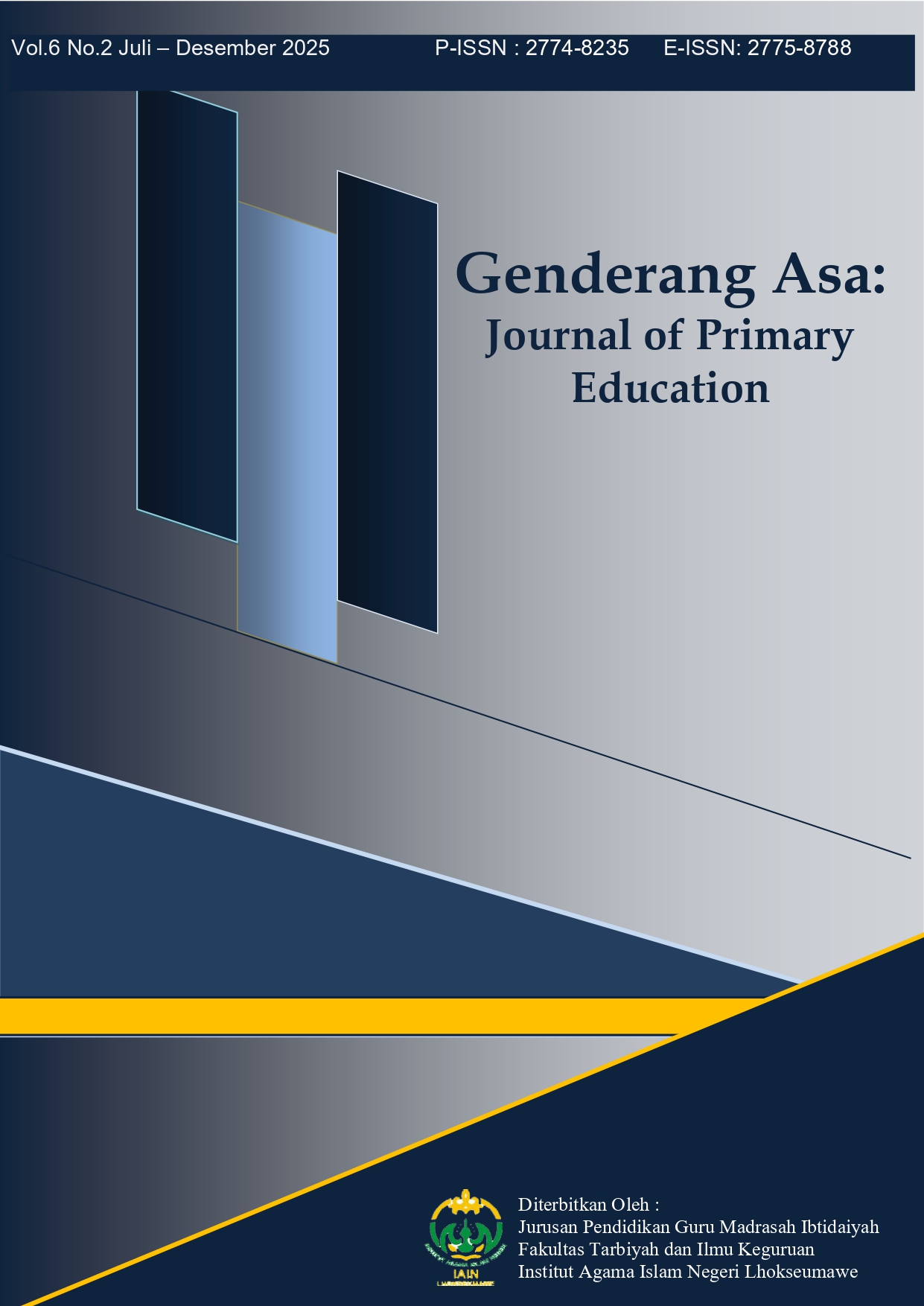Flipped Classroom: A Learning Method to Enhance Students’ Learning Independence
Main Article Content
Kiki Fatmawati
Mita Cahya Saputri
Firdayani Munawaroh
The main problem in this study is how to apply the Flipped Classroom learning method in increasing the learning independence of students of Madrasah Ibtidaiyah Salamah Jambi City. This study aims to increase learning independence with the Flipped Classroom learning method in Natural and Social Sciences subjects at Madrasah Ibtidaiyah Salamah Jambi City. This type of research is a class action research consisting of two cycles where each cycle consists of two meetings. The research procedure includes planning, action implementation, observation, and reflection. The subjects in this study were 30 fourth grade students of Madrasah Ibtidaiyah Salamah Jambi City. The results showed that in cycle I the percentage of learning independence of 56% increased to 72.16% in cycle II. The percentage of each aspect of learning independence, namely: (a) initiative from 56.7% to 74.7%, (b) discipline from 59.3% to 72.7%, (c) confidence from 52% to 72.7%, (d) responsibility from 57.3% to 72%, (e) do their own evaluation from 54% to 70.7%, (f) active in learning from 60.7% to 72.7%, (g) do not depend on others from 53.3% to 70.7%, (h) have the desire to progress from 47.3% to 70%. Based on the results of this study, it can be concluded that the learning independence of fourth grade students of Madrasah Ibtidaiyah Salamah Jambi City has increased by applying the Flipped Classroom learning method.
Fatmawati, K. (2018). Peningkatan aktivitas dan hasil belajar siswa dalam pembelajaran IPA dengan menggunakan model discovery learning di Kelas V SDN 149/VIII Muaro Tebo Jambi. Jurnal Of Education in Mathematics, Science, and Technology, 1(2), 27–33. http://jemst.ftk.uinjambi.ac.id/
Fithriyah, R., Wibowo, S., & Octavia, R. U. (2021). Pengaruh Model Discovery Learning dan Kemandirian Belajar terhadap Hasil Belajar Siswa di Sekolah Dasar. EDUKATIF : JURNAL ILMU PENDIDIKAN, 3(4), 1907–1914. https://doi.org/10.31004/edukatif.v3i4.894
Hendikawati, P., Zahid, M. Z., & Arifudin, R. (2019). Keefektifitas Media Pembelajaran Berbasis Android terhadap Kemampuan Pemecahan Masalah dan Kemandirian Belajar. Prisma, 2, 917–927. https://journal.unnes.ac.id/sju/index.php/prisma/article/view/29308/12927
Ilham, A. (2021). Meningkatkan Hasil Belajar Siswa dalam Mata Pelajaran Matematika Materi Bilangan Bulat dan Pecahan Melalui Metode Ekspositori. Action Research Journal Indonesia (ARJI), 3(2), 121–127. https://doi.org/10.61227/arji.v3i2.39
Mulyawati, Y., & Christine, C. (2019). Pengaruh pola asuh orang tua terhadap kemandirian belajar siswa. Jurnal Pendidikan dan Pengajaran Guru Sekolah Dasar (JPPGuseda), 2(1), 21-25. DOI: 10.55215/jppguseda.v2i1.990
Rozi, F., Lana, I. F., & Jadid, U. N. (2021). Meningkatan Kemandirian Belajar Siswa. Meningkatkan Kemandirian Belajar Siswa, 5, 109–124.
Siregar, N., Jalal, M., Jayanti, T., Islam, U., Sulthan, N., Saifuddin, T., Islam, U., Sulthan, N., Saifuddin, T., Islam, U., Sulthan, N., Saifuddin, T., & Tematik, P. (2022). Penerapan Media Scrapbook Pembelajaran Tematik Untuk Meningkatkan Kemampuan Kerja Sama Siswa Kelas V Mi Al - Munawwarah. Jurnal Praktek Dan Kebijakan Pendidikan Indonesia, 1(2), 26–38. https://pwjournal.penerbitgemulun.com/index.php/pwj/article/view/10
Tasaik, H. L., & Tuasikal, P. (2018). Peran Guru Dalam Meningkatkan Kemandirian Belajar Peserta Didik Kelas V Sd Inpres Samberpasi. Metodik Didaktik, 14(1), 45–55. https://doi.org/10.17509/md.v14i1.11384




